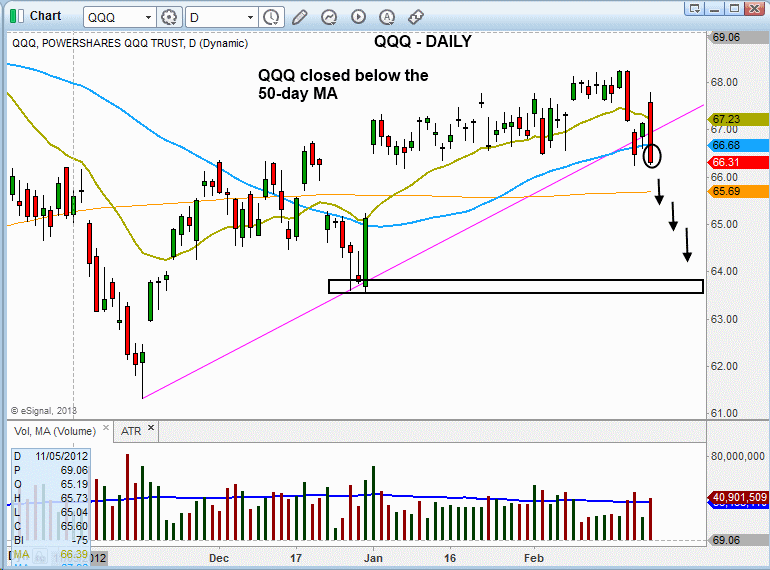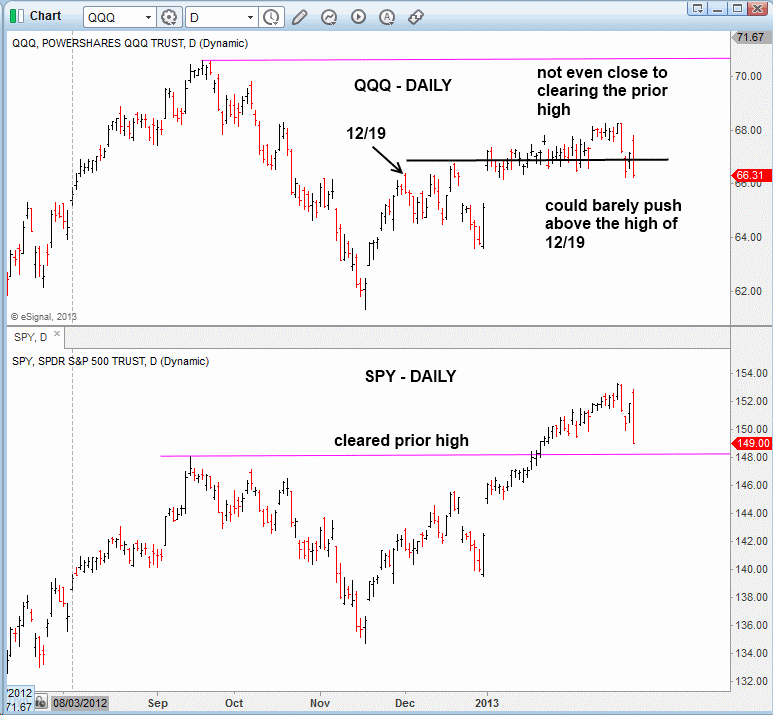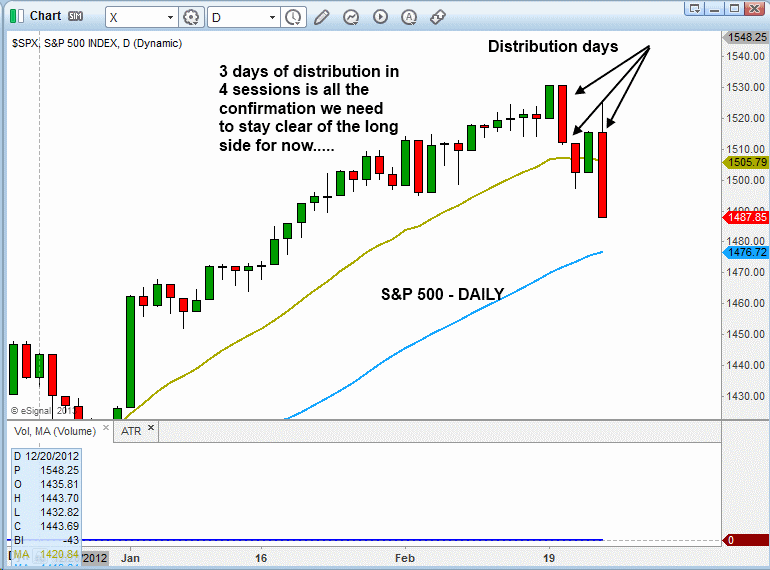In this February 22 post on our trading blog, which was published immediately following two days of heavy selling on February 20 and 21, we said, “If and when the S&P attempts to bounce from its current level, the subsequent price and volume action that immediately follows any recovery attempt will be extremely important at determining whether stocks are merely take a breather, or if the rally is dead…If the S&P 500 generates another distribution day that follows just a feeble, light volume bounce off the current lows, that could be the nail in the coffin for the current rally.
The scenario highlighted in bold text above is exactly what has happened over the past two days. After just a one-day lighter volume bounce last Friday, stocks again got slammed on higher volume yesterday (February 25). Since the S&P 500 Index has now logged three distribution days within the past four sessions, and individual leadership stocks have begun to falter, we are now selectively targeting new stocks and ETFs for potential short sale entry.
Even though we have been trading exclusively on the long side of the market since the new buy signal was received at the start of 2013, we are objective, emotionless trend traders who simply follow and trade in the same direction as the dominant market trend (which now favors the downside, at least in the near-term).
The PowerShares Nasdaq 100 ETF ($QQQ) closed below support of its 50-day MA yesterday, with an ugly, wide-ranged reversal candle (all the major indices formed bearish engulfing candlestick patterns yesterday). Although support of the 200-day moving average of $QQQ is not far below its current price, prices can slice through important moving averages like a hot knife through butter whenever the market is in distribution mode. Moving averages work really well in a bull market, but not so much when conditions turn sour. The ugly pattern in $QQQ is shown on the daily chart below:

The recent relative weakness of $QQQ really becomes clear when comparing its price action throughout last rally with the S&P 500 SPDR ($SPY): On the chart below, notice that the S&P easily cleared its prior highs, but $QQQ struggled with its initial swing high from December 19 (attributed in no small part to the sharp correction in Apple ($AAPL) recently):

Operating with the idea that the 200-day moving average of $QQQ will not provide significant support, we now expect $QQQ to fall to test its prior swing low (around the $63 to $64 area) over the next two weeks. As such, we are now targeting this trade as an “official” momentum swing trade setup on today’s watchlist.
Rather than short selling $QQQ, we plan to buy the inversely correlated and leveraged ProShares UltraShort QQQ ($QID) instead. This enables our subscribers with non-marginable cash accounts (such as IRAs) to still take advantage of newfound bearish momentum in the market, without technically selling short (inverse ETFs move in opposite direction of the underlying index). As always, our exact entry, stop, and target prices for the $QID trade setup should be noted in the ETF Watchlist section of today’s report above.
In closing, the daily chart of the benchmark S&P 500 Index below shows that it’s always a negative technical signal when distribution days cluster over a very short period of time:

Numerous times in the past, a cluster of distribution days after an extended rally, combined with the suddenly poor performance of individual leadership stocks, has been enough to prompt us to exit long positions within just a few percent of a market top (check out this actual such example from mid-2012). This has once again been the case, as we have exited all long stock positions (mostly substantial winners), and nearly all of our ETF positions (a handful of small losers) over the past few days.
Overall, we had a positive, profitable run from the rally of the past two months (exact statistics to be reported soon), and now are focused on preserving those gains through the combination of sitting patiently in cash, combined with selective short selling of stocks and ETFs with relative weakness.
The above commentary is a shortened version of the February 26 issue of The Wagner Daily, our nightly ETF and stock picking newsletter with a 10-year track record of performance. More information and risk-free 30-day trial subscription available at https://www.morpheustrading.com.
